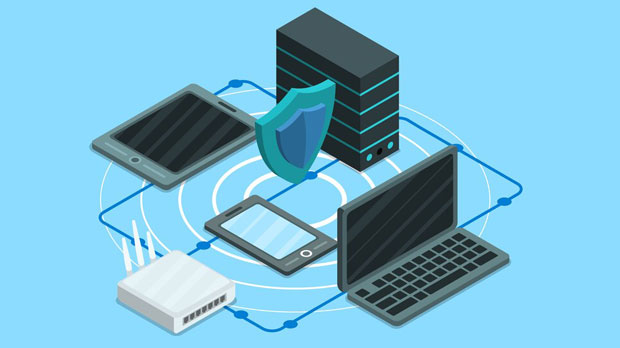When it comes to proxy services, particularly SOCKS proxies, users often face a critical choice: should they opt for a free service or invest in a paid option? While both can be used for similar purposes such as masking IP addresses or improving online anonymity, the differences in quality, security, speed, and reliability are substantial. This article aims to break down the key differences between free and paid SOCKS proxy services, helping users understand the trade-offs involved. Whether you’re using SOCKS proxies for browsing, scraping, or accessing restricted content, knowing the advantages and disadvantages of each option can save time and resources. What Are SOCKS Proxies?SOCKS proxies (Socket Secure) serve as intermediaries between your device and the internet, allowing users to route their internet traffic through another server. They are used to conceal the real IP address of the user, providing enhanced privacy and security. SOCKS proxies differ from traditional HTTP proxies in their flexibility and ability to handle various types of internet traffic, including HTTP, FTP, and even torrents.Free SOCKS Proxy Services: Pros and ConsFree SOCKS proxies are widely available and can be easily accessed by anyone. They are often promoted as an ideal choice for users who don’t want to commit financially. However, free services come with a significant set of limitations that can impact the user experience.Advantages of Free SOCKS Proxies:- Cost-effective: The biggest advantage of free proxies is that they are, well, free. For users who have basic needs and do not require high-speed internet or strong security, a free SOCKS proxy might suffice.- Easy to access: Free proxies are often easy to find, with many websites offering a list of available servers. This makes it easy for beginners to get started without much technical knowledge.- Basic anonymity: Free proxies can help mask your IP address, providing a basic level of anonymity, especially for casual browsing or accessing geo-restricted content.Disadvantages of Free SOCKS Proxies:- Speed and reliability issues: Free SOCKS proxies are often overcrowded, leading to slower internet speeds and unreliable connections. This is especially problematic for users who need consistent and fast performance, such as those engaging in online gaming, streaming, or large-scale web scraping.- Security concerns: Many free SOCKS proxy services have minimal or no encryption, which exposes users to data leaks, man-in-the-middle attacks, and other security vulnerabilities. Free proxies often log user data, putting privacy at risk.- Limited support and maintenance: Free services typically offer no customer support, and there is little to no maintenance or regular updates. Users may experience frequent downtime or face difficulty troubleshooting issues.- Risk of malware and ad injections: Some free proxies may inject ads or even carry malware, potentially compromising the user’s device. Since these services are not monitored as closely as paid ones, users are more exposed to these risks.Paid SOCKS Proxy Services: Pros and ConsPaid SOCKS proxy services are a more premium offering that comes with several benefits over their free counterparts. These services typically require a subscription or one-time payment, but the advantages they provide make them worthwhile for many users.Advantages of Paid SOCKS Proxies:- High speed and reliability: Paid proxies offer better speeds and more stable connections, which are crucial for activities like streaming, gaming, or web scraping. These proxies are often hosted on high-performance servers with minimal downtime, ensuring a smooth and fast browsing experience.- Better security and encryption: Paid services tend to offer stronger encryption and security measures, which protect user data and prevent eavesdropping or hacking. Many paid SOCKS proxy services also offer features like IP rotation and advanced security protocols.- Privacy and no data logging: Most reputable paid proxy services have a strict no-logs policy, meaning they do not store or track user data. This ensures that users' browsing activities remain private, a key concern for many individuals and businesses.- Customer support and maintenance: Paid services generally come with robust customer support, offering assistance through email, chat, or phone. Moreover, paid proxies are regularly updated and maintained, ensuring that users get the best possible experience.- Customizability and more options: Paid proxy services often offer greater flexibility, such as dedicated IPs, geographic location options, and the ability to scale according to business needs. This is especially useful for organizations or individuals with specific requirements.Disadvantages of Paid SOCKS Proxies:- Cost: The primary downside of paid SOCKS proxies is the expense. While the cost varies depending on the service, it can be an ongoing financial commitment, which might not be suitable for everyone.- Complex setup for beginners: While paid proxies often come with more features, they can also be more complex to set up. Users may need some technical expertise to configure the service properly, which could be challenging for those without prior experience.Key Differences Between Free and Paid SOCKS Proxy ServicesWhile free and paid SOCKS proxies serve similar functions, the key differences between them are stark and directly impact the user experience.1. Speed and Performance:Free SOCKS proxies often suffer from congestion due to a high number of users sharing the same server. This results in slower speeds and inconsistent performance. In contrast, paid proxies tend to have better performance because they are more optimized and generally offer dedicated resources for paying customers.2. Security and Encryption:Free SOCKS proxies may not encrypt traffic or offer any form of protection, leaving users vulnerable to attacks and data breaches. Paid services, on the other hand, often provide strong encryption, secure protocols, and other privacy features that help protect users from security threats.3. Reliability and Support:Free services typically have limited or no support, meaning users must troubleshoot issues on their own. Paid proxies come with customer support and regular updates, ensuring more reliable service with fewer disruptions.4. Privacy and Logging:Free proxies are more likely to log user data, which can be a serious privacy concern. Many paid services, however, operate with a strict no-logs policy, ensuring that your online activities remain confidential.5. Cost-effectiveness vs. Value:While free SOCKS proxies might seem like an attractive option due to their lack of cost, they often come with limitations that can affect the user experience. Paid proxies, though more expensive, provide higher value by offering better speed, security, and reliability.Which Should You Choose: Free or Paid SOCKS Proxies?The choice between free and paid SOCKS proxy services ultimately depends on the user's needs and goals.- Free SOCKS proxies are suitable for casual users who only need basic anonymity for activities such as browsing or accessing geo-restricted content. However, they are not recommended for sensitive tasks or high-performance requirements.- Paid SOCKS proxies are ideal for users who prioritize security, speed, and reliability. They are well-suited for businesses, professional web scraping, streaming, and other high-demand use cases where performance and privacy are critical.In conclusion, while free SOCKS proxies can serve as a quick solution for basic tasks, paid proxies offer a far superior experience in terms of speed, security, and reliability. For those who require a secure and high-performance solution, investing in a paid SOCKS proxy service is undoubtedly the better choice.
Sep 24, 2025






















































